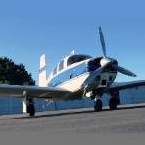Aerocruz 100 for Mooney Ranger
-
Members Online
- DXB
- Rick Junkin
- Hradec
- takair
- dkkim73
- N201MKTurbo
- Rocket_Driver
- TCC
- A64Pilot
- eman1200
- MatthiasArnold
- Scottknoll
- Aerodon
- Wingover
- Abe Frowman
- Rmfriday
- Guilly
- Justin Schmidt
- Rsmithref
- McMooney
- Brian2034
- cbarry
- M20S Driver
- ArtVandelay
- Stealth Mooney
- gabez
- bluehighwayflyer
- Fritz1
- Hoeschen
- toto
- redrider54
- CCAS
- steeve555
- redbaron1982
- good2eat
- Schllc
- pirate
- alextstone
- atpdave
- 47U
- BillyT0020
- jennifashby
- chrisburdzy98
- VetRepp
- shawnd
- Aaviationist
- AndreiC
- Jim F
- Emmet
- bigmo
- Kelpro999


Recommended Posts
Join the conversation
You can post now and register later. If you have an account, sign in now to post with your account.